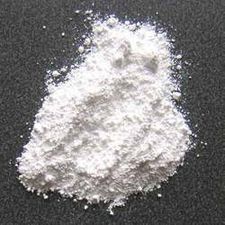This was the time when the first actual chemistry was being brought into use concerning hair colours. In Elizabethan England most women had desired to copy the Queen's red hair but never using chemistry. The recipes varied and the safest ones included roots and nuts - but then there were the more drastic methods. Quicklime, salt, sulphur and white lead could be found in numerous recipes in hair-dying. One of the recipes included boiling water, adding the ingredients and letting the hair soak for a while - the longer, the stronger colour.
 |
| No, this is not cocaine but white lead |
Eye-brows were dyed too - by both men and women. Often the same recipe used for the hair was used for the eye-brows as well. Usually, a small brush or comb would be used to apply the dye to the eye-brows. During the time when dark hair was the latest trend the recipes were often named after exotic, far-off lands such as the Eau de Perse (Eau de Persia), Eau de Greque (Eau de Greece) and Vinaigre de Cypres (Cypriot oil) - they all have that dark hair so desired in common.
Dying one's hair was not very common not even among the nobility. Most people preferred to simply powder their natural hair or their wigs (which was far safer), so we can safely assume that it was only the most daring who gave chemistry a try. After all, there were more than enough issues connected with hair and hair care (lice, scalp problems, cracked skin etc.) without adding chemicals to the mixture.

No comments:
Post a Comment